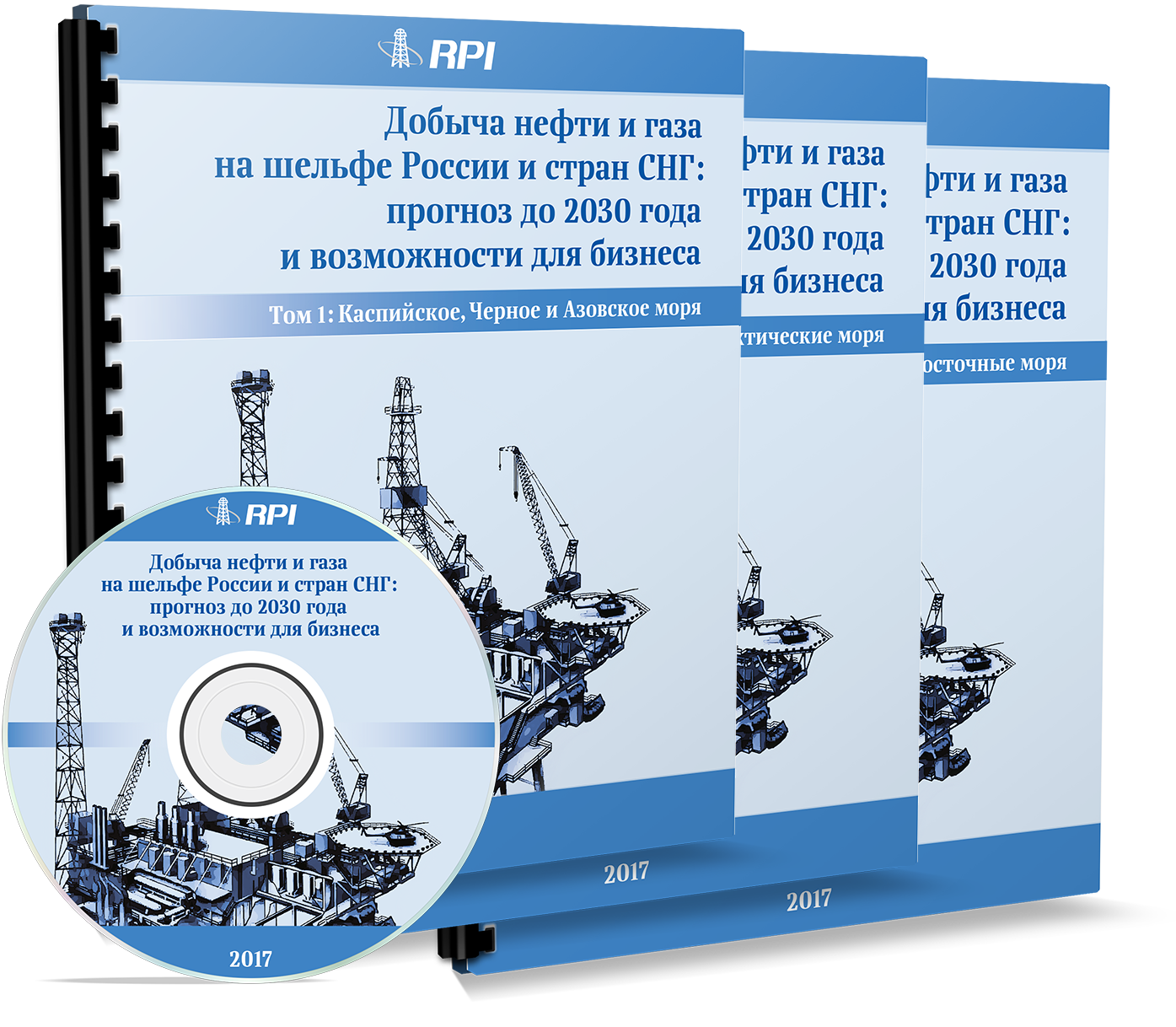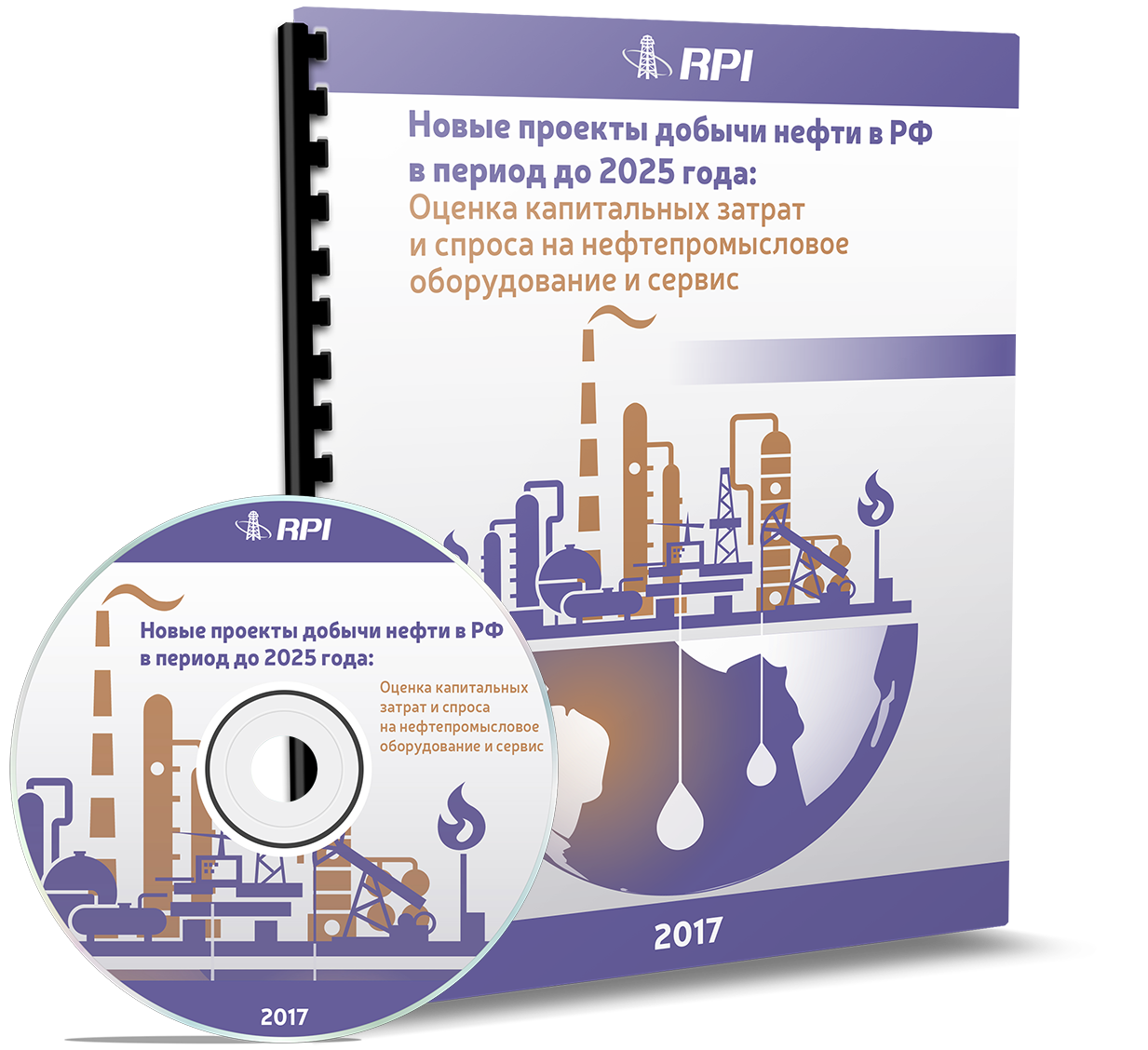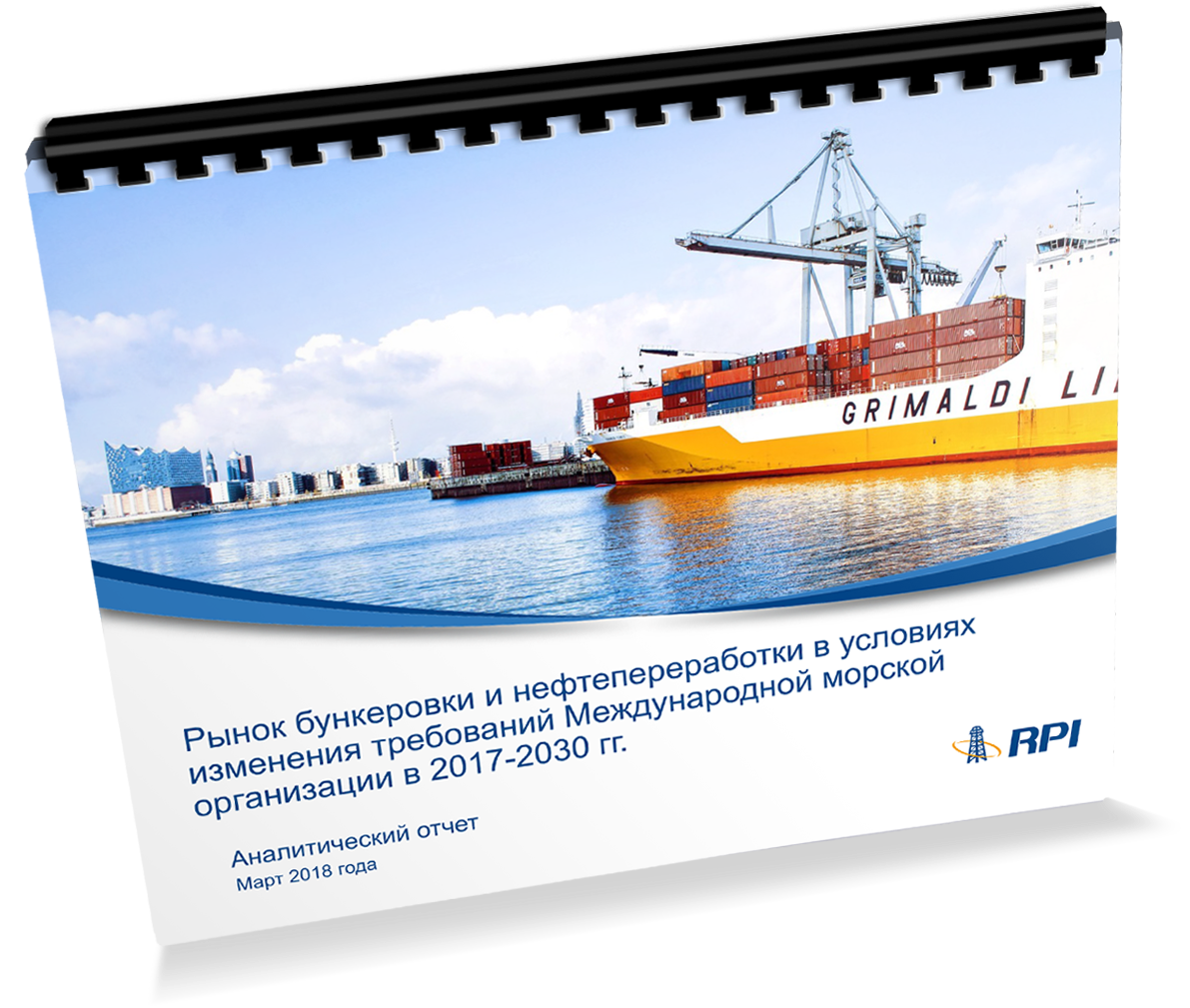Founded in 1992, RPI has been specializing in the provision of best-in-class research and advisory services on the energy industry of Russia, CIS countries and Eastern Europe. The company’s expertise extends to all major sectors of the oil and gas industry, including exploration and production, transportation and exports, refining and petrochemicals, infrastructure, oilfield services, and equipment.
Since its inception, RPI has conducted hundreds of multi-client studies and bespoke projects on a broad array of petroleum related subjects, from strategic planning to dedicated information support.
The range of RPI’s clients embraces leading Russian and foreign oil and gas companies, government agencies, investment and financial institutions, service companies and other market players engaged in the energy industry of the former Soviet Union.
Since its inception, RPI has conducted hundreds of multi-client studies and bespoke projects on a broad array of petroleum related subjects, from strategic planning to dedicated information support.
The range of RPI’s clients embraces leading Russian and foreign oil and gas companies, government agencies, investment and financial institutions, service companies and other market players engaged in the energy industry of the former Soviet Union.
Russian Oil Drilling Market: Current Situation and Development Prospects through 2026
 The new research report Russia’s oil drilling market, produced by RPI, provides the most detailed analysis of this key market available off-the-shelf. The report aims at supporting industry players’ strategic and day-to-day decision-making more
The new research report Russia’s oil drilling market, produced by RPI, provides the most detailed analysis of this key market available off-the-shelf. The report aims at supporting industry players’ strategic and day-to-day decision-making more
 The new research report Russia’s oil drilling market, produced by RPI, provides the most detailed analysis of this key market available off-the-shelf. The report aims at supporting industry players’ strategic and day-to-day decision-making more
The new research report Russia’s oil drilling market, produced by RPI, provides the most detailed analysis of this key market available off-the-shelf. The report aims at supporting industry players’ strategic and day-to-day decision-making more
Motor Oil Market: Current State, Outlook Until 2025, Analysis of Key Players and Sales Channels
 In 2016, the Russian lubricants market shrank further by 1.8 percent as output totaled 1.58 million tons, wheareas a year earlier it had dropped by 4.7 percent. RPI forecasts that the market will continue to shrink at a slower rate. At a later stage, it is expected to rebound demonstrating a 6.2-percent growth by 2020 as total output tops 1.67 million tons. more
In 2016, the Russian lubricants market shrank further by 1.8 percent as output totaled 1.58 million tons, wheareas a year earlier it had dropped by 4.7 percent. RPI forecasts that the market will continue to shrink at a slower rate. At a later stage, it is expected to rebound demonstrating a 6.2-percent growth by 2020 as total output tops 1.67 million tons. more
 In 2016, the Russian lubricants market shrank further by 1.8 percent as output totaled 1.58 million tons, wheareas a year earlier it had dropped by 4.7 percent. RPI forecasts that the market will continue to shrink at a slower rate. At a later stage, it is expected to rebound demonstrating a 6.2-percent growth by 2020 as total output tops 1.67 million tons. more
In 2016, the Russian lubricants market shrank further by 1.8 percent as output totaled 1.58 million tons, wheareas a year earlier it had dropped by 4.7 percent. RPI forecasts that the market will continue to shrink at a slower rate. At a later stage, it is expected to rebound demonstrating a 6.2-percent growth by 2020 as total output tops 1.67 million tons. more
Offshore Oil and Gas Production in Russia and CIS: Forecast until 2030 and Business Opportunities
 RPI brings to your attention the multi-faceted research entitled “Offshore Oil and Gas Production in Russia and CIS: Forecast until 2030 and Business Opportunities”, which contains the forecast of development of offshore production projects until 2030 and evaluates demand for main types of equipment and services in the Caspian, Black, Azov, Baltic Seas, as well as in the Arctic and the Far East. more
RPI brings to your attention the multi-faceted research entitled “Offshore Oil and Gas Production in Russia and CIS: Forecast until 2030 and Business Opportunities”, which contains the forecast of development of offshore production projects until 2030 and evaluates demand for main types of equipment and services in the Caspian, Black, Azov, Baltic Seas, as well as in the Arctic and the Far East. more
 RPI brings to your attention the multi-faceted research entitled “Offshore Oil and Gas Production in Russia and CIS: Forecast until 2030 and Business Opportunities”, which contains the forecast of development of offshore production projects until 2030 and evaluates demand for main types of equipment and services in the Caspian, Black, Azov, Baltic Seas, as well as in the Arctic and the Far East. more
RPI brings to your attention the multi-faceted research entitled “Offshore Oil and Gas Production in Russia and CIS: Forecast until 2030 and Business Opportunities”, which contains the forecast of development of offshore production projects until 2030 and evaluates demand for main types of equipment and services in the Caspian, Black, Azov, Baltic Seas, as well as in the Arctic and the Far East. more
New Oil Production Projects in Russia to 2025: Capital Expenditures and Demand for Oilfield Equipment and Services
 The report’s focus is to develop forecasts of capital expenditures for oil fields slated to go onstream in 2017-2025, as well as estimates of demand for main types of oilfield services and equipment. These projects will become the key source of demand for high tech oilfield services and equipment, owing to a high share of horizontal wells (up to 95 percent in some regions), as well as to complex geological and climate conditions. more
The report’s focus is to develop forecasts of capital expenditures for oil fields slated to go onstream in 2017-2025, as well as estimates of demand for main types of oilfield services and equipment. These projects will become the key source of demand for high tech oilfield services and equipment, owing to a high share of horizontal wells (up to 95 percent in some regions), as well as to complex geological and climate conditions. more
 The report’s focus is to develop forecasts of capital expenditures for oil fields slated to go onstream in 2017-2025, as well as estimates of demand for main types of oilfield services and equipment. These projects will become the key source of demand for high tech oilfield services and equipment, owing to a high share of horizontal wells (up to 95 percent in some regions), as well as to complex geological and climate conditions. more
The report’s focus is to develop forecasts of capital expenditures for oil fields slated to go onstream in 2017-2025, as well as estimates of demand for main types of oilfield services and equipment. These projects will become the key source of demand for high tech oilfield services and equipment, owing to a high share of horizontal wells (up to 95 percent in some regions), as well as to complex geological and climate conditions. more
Bunkering and Oil Refining Markets in the International Maritime Organization's Changing Regulatory Environment in 2017–2030
 “Bunkering and oil refining markets in the International Maritime Organization's changing regulatory environment in 2017–2030” analytical report aims to provide expert support for making strategic and operative decisions to a wide circle of market players more
“Bunkering and oil refining markets in the International Maritime Organization's changing regulatory environment in 2017–2030” analytical report aims to provide expert support for making strategic and operative decisions to a wide circle of market players more
 “Bunkering and oil refining markets in the International Maritime Organization's changing regulatory environment in 2017–2030” analytical report aims to provide expert support for making strategic and operative decisions to a wide circle of market players more
“Bunkering and oil refining markets in the International Maritime Organization's changing regulatory environment in 2017–2030” analytical report aims to provide expert support for making strategic and operative decisions to a wide circle of market players more
Russian Seismic Survey Market: Current Situation and Development Prospects through 2025
 In 2011-2014, Russia's seismic survey market demonstrated steady growth. Plummeting oil prices forced subsoil users to review their geological exploration programs for 2015, bringing about a substantial decrease of the seismic survey market. The overall scope of work in the 2D segment was reduced by 36 percent, the 3D segment shrank by 18 percent, and the average level of seismic teams’ workload plunged from 70-80 percent in 2014 to 50-60 percent in 2015. more
In 2011-2014, Russia's seismic survey market demonstrated steady growth. Plummeting oil prices forced subsoil users to review their geological exploration programs for 2015, bringing about a substantial decrease of the seismic survey market. The overall scope of work in the 2D segment was reduced by 36 percent, the 3D segment shrank by 18 percent, and the average level of seismic teams’ workload plunged from 70-80 percent in 2014 to 50-60 percent in 2015. more
 In 2011-2014, Russia's seismic survey market demonstrated steady growth. Plummeting oil prices forced subsoil users to review their geological exploration programs for 2015, bringing about a substantial decrease of the seismic survey market. The overall scope of work in the 2D segment was reduced by 36 percent, the 3D segment shrank by 18 percent, and the average level of seismic teams’ workload plunged from 70-80 percent in 2014 to 50-60 percent in 2015. more
In 2011-2014, Russia's seismic survey market demonstrated steady growth. Plummeting oil prices forced subsoil users to review their geological exploration programs for 2015, bringing about a substantial decrease of the seismic survey market. The overall scope of work in the 2D segment was reduced by 36 percent, the 3D segment shrank by 18 percent, and the average level of seismic teams’ workload plunged from 70-80 percent in 2014 to 50-60 percent in 2015. more
Use the interactive map to narrow down the list of reports to a certain area


















